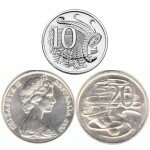The dawn of the new year brings with it the light of unity as nations gather to address the issues of global warming, the oil crisis, economic collapse, health, and world hunger with a fevered urgency. While we are considering all the options, the Cannabis hemp plant is one solution in the search for alternatives. Hemp has ecological, industrial, and medicinal values.

Hemp is a uniquely productive source of fiber, oil, protein, pulp for paper, and methanol fuel.
Hemp fiber became a major crop in the history of almost every European country by 400 BC. The Greeks and Romans used hemp rope and sails exclusively for their sailing vessels, importing the fiber from Sicily. The early Americans cultivated Cannabis hemp primarily for its fiber. Hemp-fiber production was most important to the developing colonies for homespun cloth and ship riggings.

Hemp growing was encouraged by the British Parliament to meet the needs for fiber to rig the British fleets. Hemp production was so important that in 1762 Virginia imposed penalties for those who refused to grow the plant. By the 1800s, Kentucky proudly exceeded hemp production of all the states with 40,000 tons annually, second only to cotton. However, the Civil War disrupted production and the industry never recovered.
By the early 1900s, with a labor shortage and lack of modern machinery, the hemp industry slowly fell to the wayside. But a resurgence of hemp-fiber products is slowly gaining momentum with softer and colorful fabrics. The plant’s resilience and vigor make hemp a wonderful candidate for methanol fuel; compared to many of our ancient domesticated plants, hemp never lost its colonizing tendencies or ability to survive without human intervention. If abandoned, it will flourish in our vacant fields and drainage ditches; unlike a tender crop such as corn, hemp is more economically sound.
When the Chinese invented paper they used hemp fibers recycled from old rags and fish netting.
Hemp paper had been well respected for its longevity and resistance to tearing. The hemp paper was so durable that fragments have been found in graves predating 100 BC.
Canada uses hemp in its paper currency and in all fine Bibles. Many dwindling timber forests could be saved by using hemp instead. While a tree may take 20 years before it is ready to harvest, hemp is readily available.
For thousands of years Cannabis hemp has been used for medicine. Emperor Shen-nung in 2000 BC prescribed root as a paste applied to relieve the pain of broken bones and surgery. From there new uses were developed, such as extracting precious oil from seed with a technique still used today.

Pressed seeds yielded 20 percent more oil by weight than other oils and were used for cooking, to fuel lamps, and for lubrication, and the pulp was fed to their domesticated animals. Centuries later the uses of hemp spread through expanding trade by the Aryans. For India, hemp played an active role in its rituals. After 4,000 yearsof oral traditions and spiritual teachings, the four Vedas were finally recorded in 1400 BC listing hemp as the spirit bhangas. Described as the “reliever of anxiety” (Atharva Veda), it was noted as a gift from the gods. Hemp lowered fevers, eased sleep, and relieved dysentery.
Not until the 20th century, when the tobacco industry wanted to take hold of the minority population, did hemp take on a different role. When racially provoked, misguided politicians developed a strategy to introduce myths that hemp caused insanity, lust, violence, crime, and that it was a poison that creates the degradation of religion. Even the first commissioner of the Federal Bureau of Narcotics Harry Anslinger stated in 1930, before he set the ax to the hemp plant, that he had serious doubts as to whether federal laws restricting it could be sustained as constitutional. The FBN further stated that it believed that the plant was not a problem because only the minorities used it.
Then came the campaign that used zealous scare tactics to portray hemp’s nightmarish dangers to society. The anti-marijuana campaign stirred up people’s aversion by focusing on the taking of American jobs by migrants and minorities, and marijuana hysteria took hold. In light of hindsight it is most imperative that hemp be reinstated into action.

Virtually every part of the plant is used—root, leaves, and flowers for medicine; stems for textiles, rope, and paper pulp; and seeds for food andoil. Hemp will be a valuable and less costly source than what’s now used for methanol fuel.
For medicinal applications, hemp has been used as a treatment for nausea, spasticity, glaucoma, epilepsy, and as an analgesic and tranquilizer. Topically, the cannabinoids contained in hemp have analgesic and antibiotic properties and are used for sore muscles, arthritic pain, burns, and many skin ailments. For sound sustainability hemp deserves renewed attention because it is ecologically sensible. Hemp is our greatest renewable resource.

Support the restoration movement and buy a hemp product today. Darcy Stoddard. www.hemp-eaze.com 












